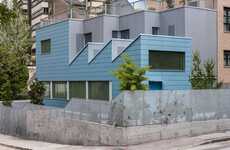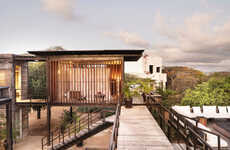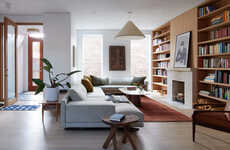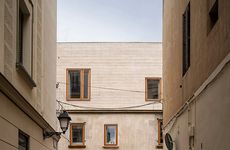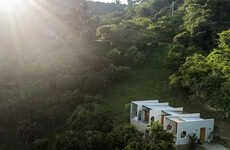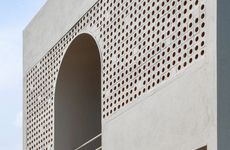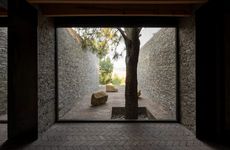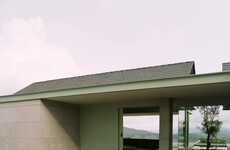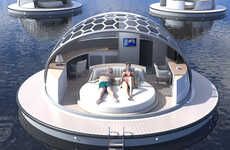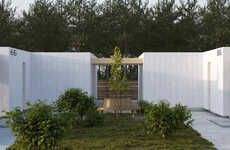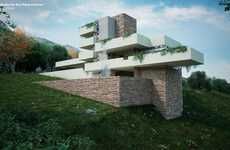
This Ventilated House in Madrid Embraces Sustainable Design
Rahul Kalvapalle — April 20, 2022 — Art & Design
References: slowstudio.es & newatlas
Spain's Slow Studio has lifted the curtains off a beautifully ventilated house, situated in the Spanish capital city of Madrid, that uses an innovative facade and intelligently designed floorplan to allow for maximum circulation of airflow as well as natural light without using up undue amounts of energy.
'Casa en Cerros de Madrid,' which translates to 'House in the Hills of Madrid,' makes use of smartly positioned slats along its northerly facade which are designed to encourage cross-ventilation. The dwelling also makes generous use of insulated walls for optimized thermal control.
Elsewhere, this amply ventilated house also promises generous amounts of natural sunlight thanks to the inclusion of a south-facing facade as well as the installation of manipulable roof components that allow for the residents to control how much natural light they want to let in.
Image Credit: Salva López
'Casa en Cerros de Madrid,' which translates to 'House in the Hills of Madrid,' makes use of smartly positioned slats along its northerly facade which are designed to encourage cross-ventilation. The dwelling also makes generous use of insulated walls for optimized thermal control.
Elsewhere, this amply ventilated house also promises generous amounts of natural sunlight thanks to the inclusion of a south-facing facade as well as the installation of manipulable roof components that allow for the residents to control how much natural light they want to let in.
Image Credit: Salva López
Trend Themes
1. Ventilated Homes - Designing homes with innovative and sustainable practices that allow for maximum airflow and natural light while minimizing energy usage.
2. Cross-ventilation - Creating smartly positioned slats along facades to encourage cross-ventilation and maximize air circulation within homes.
3. Thermal Control - Using insulated walls and roofs to optimize and control the temperature within homes.
Industry Implications
1. Architecture - Designing and constructing environmentally conscious homes with innovative features that improve air flow and thermal control.
2. Construction Materials - Developing new and improved building materials that enhance natural ventilation in homes while reducing energy consumption.
3. Smart Home Technology - Integrating smart home technology that allows for residents to control natural light and temperature within homes for optimal comfort and energy efficiency.
3
Score
Popularity
Activity
Freshness



